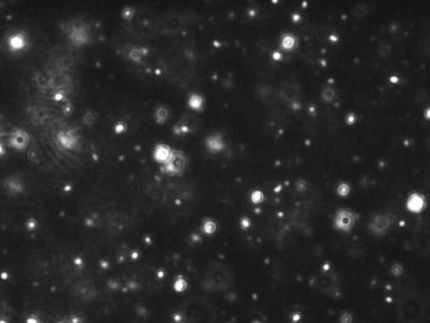Mouse gene suppresses Alzheimer's plaques and tangles
Protein reduces levels of amyloid beta and tau hyperphosphorylation, 2 hallmarks of Alzheimer's
Advertisement
Investigators at Burnham Institute for Medical Research and colleagues have identified a novel mouse gene (Rps23r1) that reduces the accumulation of two toxic proteins that are major players in Alzheimer's disease: amyloid beta and tau. The amyloid and tau lowering functions of this gene were demonstrated in both human and mouse cells. Amyloid beta is responsible for the plaques found in the brains of Alzheimer's patients. Tau causes the tangles found within patients' brain cells. The study was published in Neuron.
These findings could lead to new treatments for Alzheimer's disease. Scientists throughout the world are searching for ways to reduce the levels of these two proteins as a means of treating Alzheimer's, so finding a gene that can control the amount of both proteins is particularly important. Overproduction of amyloid beta and its accumulation within senile plaques in the brain and the formation of abnormal tau tangles (neurofibrillary tangles composed of hyperphosphorylated tau protein) are major causes of disrupted brain function in Alzheimer's disease.
Hauxi Xu, Ph.D., professor and acting director of the Neurodegenerative Disease Research program at Burnham, collaborated with Nobel laureate Paul Greengard, Ph.D., of the Laboratory of Molecular and Cellular Neuroscience at The Rockefeller University, Stanley Cohen, Ph.D., of the Department of Genetics at Stanford University School of Medicine, Limin Li, Ph.D., of Functional Genetics, Inc., and with researchers from Xiamen University, to demonstrate that the RPS23R1 protein, which is encoded by the gene, triggers a signaling pathway within brain cells that inhibits a protein called GSK-3 (glycogen synthase kinase-3), which regulates both amyloid beta generation and tau phosphorylation (required for tangle formation). The team also found that the Rps23r1 gene, whose human counterpart has not yet been identified, was created through a process called retroposition, in which a gene is duplicated through the reverse transcription (or reading) of mRNA and the duplicate is placed in a different location in the cell's DNA. Although most retroposition events result in non-functional duplicates (called pseudogenes) , in rare cases, retroposed genes, like Rps23r1, can become functional.
"From the point of view of treating Alzheimer's disease, if we can express the mouse gene in human brain cells, we may be able to control the buildup of amyloid beta and tau neurofibrillary tangles," said Dr. Xu. "From an evolutionary point of view, we have found an example of a retroposed gene that took on a completely new function."
Dr. Xu and colleagues used a technology called random homozygous gene perturbation to search for genes that regulate amyloid beta generation. This allowed the team to identify the Rps23r1 gene and found that the RPS23R1 protein it encodes can interact with a protein called adenylate cyclase that stimulates a second protein called protein kinase A, which inhibits GSK-3 activity. The effects of RPS23R1 on reducing amyloid beta levels and tau phosphorylation were corroborated in a transgenic Alzheimer's disease mouse model. The team subsequently determined that Rps23r1 is a reverse-transcribed version of the mouse ribosomal protein S23 (Rps23) gene, which is nearly identical to the human Rps23 gene.


















































